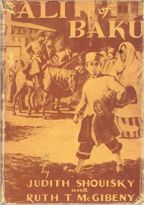|
"John D. Thompson's restaurant at 3 o'clock was an eating
house, decked here and there with late lunchers; at
3:15 it was a hospital, with the dead and dying
stretched on the marble eating tables; at 4 o'clock
it was a morgue, heaped with the dead; at 7:30 it
was again a restaurant, but with chairs turned on
top the tables that had been the slabs of death,
with the aisles cleared of the human debris, and the
scrub women at work mopping out the relics of human
flesh charred and as dust, and sweeping in pans the
pieces of skulls that had lain about the mosaic
floors, yet damp with the flowing length of women's
hair."
Inter Ocean newspaper December 31, 1903.
John R. Thompson (1865–1927) was an Illinois native
who founded a successful chain of
Thompson restaurants and
grocery stores. He began in 1887 with a single store
in Fithian, IL. When sold in 1891, it provided
capital for his first restaurant at 397 State St. in
Chicago. His restaurants promoted low-priced and
nutritious food, fast, in a clean environment.
Interestingly, in addition to restaurants and
groceries, John Sr. managed several theaters for his
brother Harry W. Thompson.
Ruth E. Thompson (1896–1990)

Plucky Ruth grew up to become a writer of children's
songs, poetry, and short stories for pulp magazines.
She bore four children and endured two divorces. Her
second husband, Donald Mcgibeny, related to the
Mcgibeny Family Musicians, was also a writer of
silent films and novels, as well as a radio
commentator.
Writers sometimes confess that their imagination is
a mixed blessing that both fertilizes and curses. A
descendant reported that for the rest of her life,
Ruth retained a vision of all the Iroquois
aerialists burning to
death as they flew overhead.
Only one aerialist died, and she was hidden from
view on the stage at the time. There
were no aerialists in the air during the fire. Ruth's
recollection is a sobering reminder, however, that
Iroquois fire survivors carried lasting memories of
the disaster. For children, memories of what they
actually saw could have
blended with what they envisioned while hearing
adult discussions and passages read from newspapers.
Especially a little girl with the imagination of a
future author.
|

|
John R. Thompson Jr (1895–1980)
John Jr (pictured above as the little boy on the horse) attended
college, married, had three children, and assumed
control of the restaurant business. By 1921 there
were ninety-seven John R. Thompson restaurants
around the country. The groceries were sold off in
1924. John Jr further expanded the company but
became involved in legal disputes over integration
and charges of tax evasion involving his father's
art collection.
George W. Holloway (1823–1908)
Eighty-year-old Grandfather Holloway lived another five years after
the Iroquois Theater fire and may have been ready
when his time came. He'd survived the American Civil
War, the death of his wife, Sophia McCulloch Lyon
Holloway (1827–1901), and the worst theater fire in
U.S. history. 'Might have reasoned that staying on
would be pushing his luck. In 1903 he'd been
visiting his daughter's family from his home in
Georgetown, Illinois, a tiny burg about three hours
south of Chicago.
Unknown aunts
It is not known who
the aunts were in the Thompson theater party. John
and Rose each had multiple sisters. In a later
interview, John referred to "Sister," suggesting at
least one in the party was one of his sisters, Anna,
Nellie, or Maud, but with Grandpa Holloway in the
party, it's equally possible that John called his sister(s)-in-law "Sister" thus referred to Rose's
sisters, Abby and/or Belle.
In the years after the fire
Not surprisingly, restaurant traffic suffered at the Randolph street
diner for a few weeks but eventually resumed.
John incorporated in 1907 with thirty restaurants
and two groceries. That same year brought the final
Iroquois Theater trial with the acquittal of Will J.
Davis. Had the trial been delayed and rescheduled to
the next term, instead of Judge Kimbrough, the
sitting judge would have been Judge Thompson, John
Thompson's brother.
|
